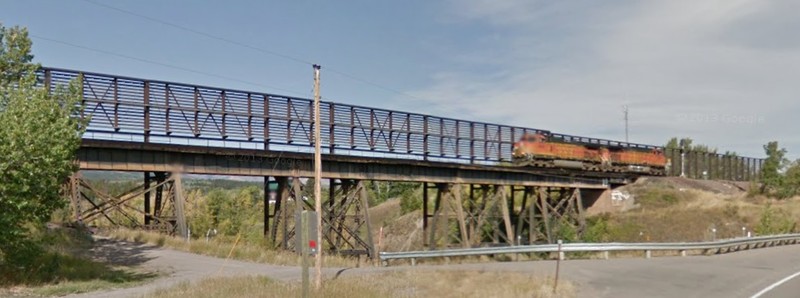Wind Fences
Introduction
Text-to-speech Audio
The structure alongside the tracks is a high-tech wind fence. The Browning area is known for its 60 to 100-mile-per-hour winds. These winds typically come from the west and can be strong enough to blow empty freight cars right off the tracks. The wind fence here on this north-south stretch of track was designed to prevent this from happening.
Images
Wind Fence

Backstory and Context
Text-to-speech Audio
The safety measures implemented by the BNSF Railway include the extensive use of anemometers, the technical name for wind gauges. Strategically positioned across the prairie, these devices serve as guardians against potentially hazardous wind conditions. When wind speeds escalate to unsafe levels, dispatchers promptly intervene, directing trains to either slow down or halt operations until the winds diminish, ensuring the safety of passengers and cargo. Furthermore, the landscape adjacent to the railway often features additional protective structures, such as snow fences. Positioned strategically along the hillsides, these barriers serve a dual purpose. Primarily, they act as windbreaks, mitigating the velocity of winds sweeping across the plains and reducing the risk of derailment or other weather-related incidents. Additionally, snow fences are crucial in managing winter conditions by intercepting snowdrifts, preventing them from accumulating on the tracks, and impeding train movement. By deploying these comprehensive safety measures, the BNSF Railway prioritizes the secure and efficient transportation of goods and passengers across its extensive network.
